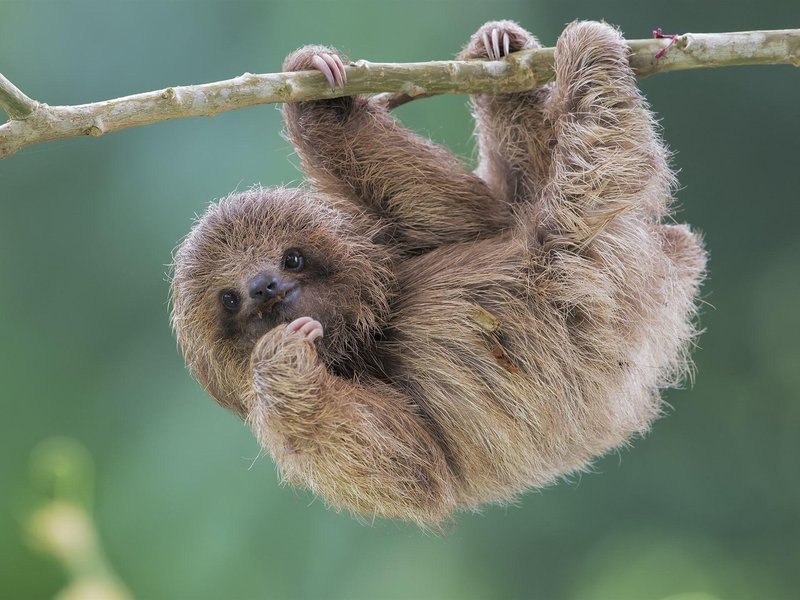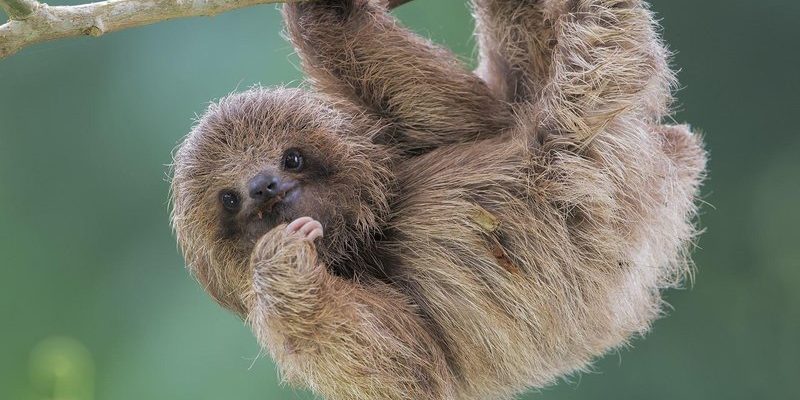
Sloths are often likened to the laid-back friend who takes life at a relaxed pace, and that’s part of their charm. In a world that moves at lightning speed, sloths remind us to slow down and enjoy the little moments. But there’s much more to them than just their leisurely lifestyle. So grab your favorite drink, settle in, and let’s explore the wonderful world of sloths!
1. Super Slow Movers
Honestly, if you’ve ever watched a sloth move, you know their pace is downright leisurely. Sloths are famous for their slow movements, which can be attributed to their low metabolic rate. They tend to move at about 0.03 miles per hour! To put that in perspective, that’s slower than a snail.
Why do they move so slowly? Well, their slow lifestyle helps them conserve energy. Sloths primarily munch on leaves, which are low in calories. By taking things easy and moving slowly, they can save energy for digestion and avoid burnout. Imagine being able to chill out all day, only needing to snack occasionally—that’s basically the sloth life!
2. Unique Digestion
Let me explain why sloths are such picky eaters. Their diet mainly consists of leaves, and because these leaves are tough to digest, sloths have evolved a unique digestive system. It can take a sloth up to a month to fully digest a single meal!
Their stomachs hold a special adaptation: the ability to ferment their food. This means that the leaves stay in their stomach for a long time, allowing beneficial bacteria to break them down. This long process not only extracts the small amount of nutrients available but also keeps sloths from needing to eat very often. Talk about a low-maintenance diet!
3. Expert Tree Huggers
You might be wondering why sloths spend almost their entire lives hanging out in trees. It’s all about safety! Sloths are excellent climbers and have strong limbs and curved claws, which help them cling to branches. Living high up means they can avoid many predators that roam the forest floor.
Their natural camouflage also works in their favor. With their greenish fur, sloths blend into the surrounding leaves. Sometimes, this fur even grows algae, which adds to their disguise. It’s like nature’s way of giving sloths a little extra help in staying hidden. Imagine wearing a leafy outfit to blend into your surroundings perfectly!
4. They Can Hold Their Breath
Here’s the thing: sloths are not just slow on land; they’re surprisingly good swimmers too! They can hold their breath for up to 40 minutes when submerged. When they swim, they move their limbs in a sort of dog-paddle style, and the buoyancy of their long limbs helps them glide through the water.
Why do they swim? Sometimes, they need to cross rivers or move between trees that are far apart. It’s an astonishing adaptation that shows how versatile these animals are despite their slow, languid appearance. It’s like having a secret superpower that surprises everyone!
5. Social Creatures
Even though sloths are known for their solitary lifestyle, they can be quite social in their own way. They don’t typically hang out in big groups, but they do have their favorite trees and can sometimes be found in small clusters.
Sloths communicate using a variety of sounds, from grunts to screams, especially during mating season. It’s fascinating to think that these slow movers have a social life to some extent, just like humans. They might not throw parties, but they definitely have their own ways of connecting with fellow sloths!
6. Species Variety
Did you know there are two main types of sloths? There are two-toed sloths and three-toed sloths. The difference may seem tiny, but it affects their appearance, diet, and even behavior!
Two-toed sloths have longer limbs and fewer toes, while three-toed sloths are a bit chunkier and have a more rounded body. Interestingly, they also have different types of fur and live in different habitats. Their specific adaptations allow them to thrive in their environments. Nature’s way of showing that there’s more than one way to be a sloth!
7. Slow Metabolism, Long Lifespan
Another intriguing aspect of sloths is their lifespan, which can reach up to 30 years in the wild. The slow metabolism plays a big role here, as it allows sloths to age at a more gradual pace than many faster animals.
In captivity, some sloths have been known to live even longer—up to 50 years! Their leisurely lifestyle and specialized diet contribute to their longevity, making them one of the more resilient mammals out there. It’s a reminder that sometimes taking life slow can lead to a longer, more fulfilling existence.
8. Threats to Survival
Unfortunately, sloths face several threats that put their survival at risk. Deforestation is a significant issue, as their natural habitats shrink, leaving them more vulnerable to predators and starvation. Additionally, climate change and illegal pet trade further affect their numbers.
Conservation efforts are crucial to help protect these charming creatures. Awareness and education about sloths can lead to more people understanding their importance in the ecosystem and taking steps to ensure their habitats are preserved.
9. Unique Reproductive Habits
Sloths have a remarkably different approach to reproductive habits compared to many other animals. Female sloths typically only give birth once every two to three years after a long gestation period of about six months.
When mothers give birth, they are nurturing and protective. Sloth babies cling to their mother’s fur, staying close for safety and warmth. This bond is vital for survival, as the newborns rely on their mothers for food and guidance in their early days. It’s heartwarming to think of these gentle giants caring for their little ones in a world that often seems too fast-paced.
10. Fascination of Humans
Finally, sloths have captured the hearts of people worldwide. Their adorable faces, slow movements, and quirky behaviors have made them internet sensations. They’re often featured in memes, photos, and videos, bringing smiles to millions.
Zoos and wildlife parks often showcase them, and there’s a growing interest in sloth conservation. It’s great to see how these charming creatures can inspire people to learn more about wildlife and advocate for environmental protection. The sloth is more than just a cute animal; it serves as a reminder of the importance of every creature in our ecosystem.
In conclusion, sloths are far more than just cute, slow creatures hanging from trees. They are complex animals with unique adaptations, fascinating habits, and an importance that extends beyond their adorable appearance. As we continue to learn more about them, it’s vital to protect their habitats and ensure they thrive for generations to come. So the next time you see a picture of a sloth, remember there’s a whole world of wonder behind that relaxed exterior!

